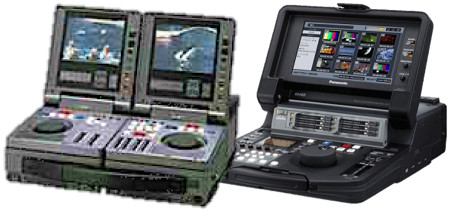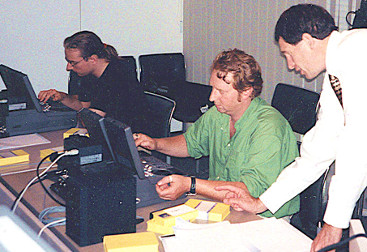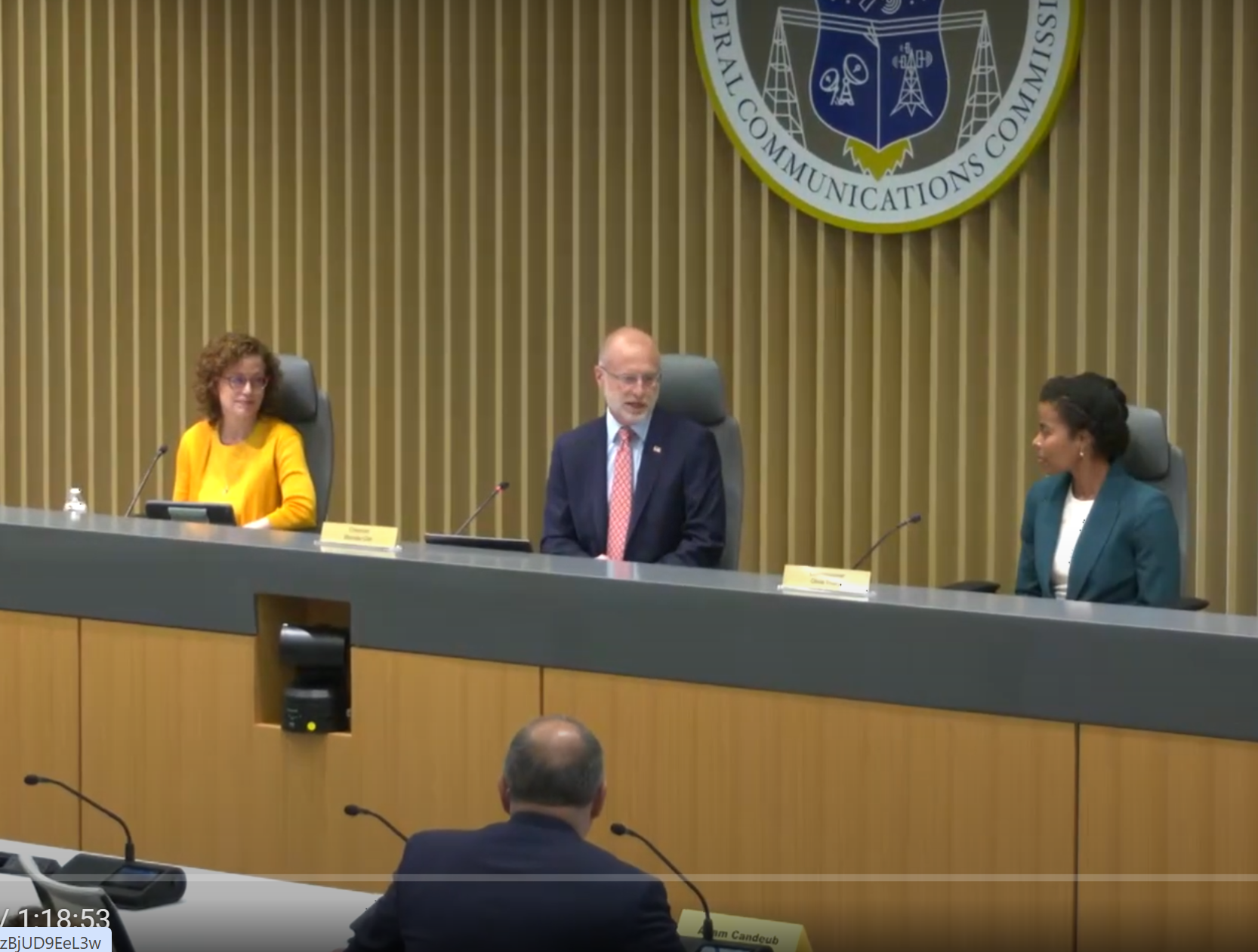Are Smartphones the Future of TV News? Part 2
In part 1, the author examined the current state of the television newsgathering business. In part 2, Packer looks at what’s ahead.
If smartphone newsgathering really is the wave of the future and not some pie-in-the-sky pipe dream, which television station or network will be first to catch that wave and dump most of its ENG systems and methods into that same bone yard we piled film cameras, processors, Moviolas, splicers and film chains back in the 70s?
It was in Europe where smartphone newsgathering first took substantial root even if, today, the movement there is stalled. Led by Nokia and Reuters beginning a decade ago, and then adopted by the BBC, this effort included the “mobile journalist” concept. But the VJs were, and today remain, second-class citizens and today are still seen mostly as crime reporters and as first responders until the cavalry (ENG crews) arrive.

Irish video journalist Glen Mulcahy founded Mojocon in 2015 as the world’s first annual conference for video journalists, most of whom shoot with smartphones (with some using DSLR cameras and prosumer camcorders). Mulcahy heads innovation at RTÉ, Ireland’s national public broadcaster and a co-sponsor of the conferences, which have been held in Ireland for the past three years.
Here’s what’s telling: Despite being the world’s highest profile advocate for smartphone newsgathering, and despite having a key position at his television station, Mulcahy has not been able to convince RTÉ (or any station for that matter) to replace ENG with a smartphone-based system.
I asked Mulcahy about that failure. His response in an email:
“I'm amazed that only two local stations in the world have migrated to mojo-only. My opinion about migrating TV to mojo has shifted radically in the last 12 months. The future of mojo is in social M2M news, by mobile for mobile. After five years of teaching broadcast journalists and trying to get their management to implement true mobile first strategies, I've decided to throw in the towel. They are too (expletive) entrenched in the expensive buildings, platforms and transmission systems to realize that 5G and gigabit-per-second mobile data speeds (delivering live 4K/360 content) is going to annihilate their business model. TV news will be dead in five years.”
The professional video industry's #1 source for news, trends and product and tech information. Sign up below.
Wow!
LEAVING THE DOOR OPEN TO DISRUPTERS
Mulcahy has reason to be frustrated. Television news executives should be opening their doors faster and wider to his consulting and training. His experience is part of the circumstantial evidence that suggests most broadcasters may never get it and will leave their companies vulnerable to attack by online startups who have a greater interest in economy, speed and quality, not to mention no existing multimillion dollar ENG capital investments.
Part of Mulcahy’s frustration is because broadcast television executives are thumb-twiddling during the impending 5G digital tsunami, oblivious to the oncoming potential carnage. Like deer, paralyzed, caught in the headlights.
I think Mulcahy’s prophecy will come to pass. At its outset a decade ago, smartphone newsgathering did not build up a sufficient head of steam to displace legacy equipment and methods. At the same time video journalists, whether using prosumer camcorders, DSLR cameras or smartphones, also failed to supplant conventional two and three-person camera teams.
News update: Since Glen sent me that email there’ve been a couple of developments. Take a peek towards South Asia. NDTV in New Delhi, India, this past summer switched to a mobile journalism model where its reporters shoot and edit news video. The television station has already laid off camera operators and video editors. NDTV, which broadcasts news in two languages, announced it was shifting from conventional broadcasting to digital storytelling using mobile phones to match “international trends.”
"Like other news broadcasters around the world, NDTV is reorganizing its newsroom and resources to focus on mobile journalism. We are the first major network in India whose reporters are all trained in using mobile phones to shoot stories. This is not just about cost-cutting, though that is certainly, for us…an important factor in operations. Mobile journalism means reports are lightning-quick and much more efficiently produced—a priority for any news company. It would be irresponsible to viewers and to shareholders, as well as (being) archaic, to maintain decades-old templates of how to shoot and edit."
Perhaps not to be outdone, the Bangladesh daily, Prothom Alo, published in English and Bengali, announced this fall that it’s been building a large mobile journalism network in the country with “184 journalists around the country trained to shoot, edit and publish content straight from their smartphones.” According to journalism.co.uk:
“In July 2016, the publisher began to experiment with the new techniques, and found that mobile journalism (mojo) helped them increase the amount of video coverage they produced, while improving the speed at which they report on stories for their online daily audience of seven million readers.”
"If I couldn't take my laptop out with me on a shoot, I used to have to come back to office to edit videos and file to Dhaka—it took too much time," Prothom Alo reporter Neamot Ullah told journalism.co.uk.
5G: IT IS A BIG DEAL
5G high-speed wireless, mobile network technology is expected to be 100 times faster than current 4G LTE wireless, which is already fast enough for smartphone newsgathering with the assistance of some workarounds and add-on technology like bonded cellular.
This past summer some experts predicted that 5G may arrive even sooner than expected, which will catch many news organizations, which have not taken full advantage of 4G, even more off guard. In July, Nokia Chief Executive Rajeev Suri said, “5G trials will accelerate in 2018 and, in 2019, we can expect to see meaningful deployment in the U.S., China and potentially other markets like Japan.”
That same month Qualcomm CEO Steven Mollenkopf moved up his 5G rollout prediction as well. "You’ll see 5G in 2019 for sure," he said at a Fortune Brainstorm conference in Aspen, Colo.
5G will come into play in both main smartphone newsgathering pipelines: the one between reporters in the field and the station and the other between the station and video news consumers. Sometimes it will even be a single, direct pipe between reporters’ smartphones and news consumers who, more often than not, view on smartphones.
A direct, live 5G connection between the news scene and viewing devices will merely be a high-powered version of today’s existing, 4G direct channel used for Twitter/Periscope, Google/YouTube Live and Facebook Live webcasting.
Social media live steams are, of course, already used by enterprising video journalists. The opportunity to use social media rather than create an in-house, live reporting system did not escape UK’s Sky News. “Facebook Live has opened up a whole new avenue of newsgathering, forcing organizations to utilize mobile devices to create content,” Richard Pattison, deputy head of Sky’s news technology, toldTVBEurope. “At a very basic level, it has provided news organizations with an additional revenue stream, which is always welcome. From a technology point of view, it has forced our newsgathering operations to focus on mobile and IP-based delivery methods which, although they have been around for some time, are sometimes overlooked in favor of more ‘traditional’ delivery methods.”
POSTSCRIPT
In 1997, I conducted several workshops for Sony’s new Betacam SX ENG field editing system in Germany. The so-called “laptop editor” was a technical marvel designed to facilitate a news-scene workflow. A slick brochure touted the advantages:
“The Digital Portable Editors bring new productivity and flexibility to news crews in the field, and are the key components in the new digital era. The Digital Portable Editors are small and lightweight, achieving a significant reduction in the field editing equipment required by news crews.”

Sony needed an American to train reporters and cameramen because the typical German video editing workflow—wherein the recording of reporter narration was done in a separate sound studio, as the last step, after all video was laid down—was incompatible with field editing. (Even today that film-era editing workflow persists at many stations in the country.)
Around the same time, Panasonic introduced its similar, DVCPRO mobile filed edit station that weighed in at 26 pounds and enabled “recording and playback of digital video in the field or on the desktop.”

Even though the mobile, battery-powered field editors were technology breakthroughs they failed in the marketplace: They were too expensive for every news crew to have one, they enabled a workflow too different from customary practice, and the edited video still had to be hand-carried to the station or transmitted via microwave or satellite.
Cost and transmission impediments no are no longer good reasons for field editing remaining a rarity. The biggest obstacle is the traditional workflow.
Lynn Kenneth Packer is a freelance journalist and television news consultant. He has worked as reporter and a university adjunct instructor, and conducts newsgathering workshops.
